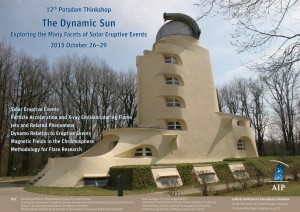Understanding Breaks in X-Ray Spectra: Evaluation of a Co-Spatial Return-Current Model
Meriem Alaoui (CUA & GSFC/NASA)
Abstract. Return currents driven by non-thermal electron beams in solar flares have been proposed to account for the large electron flux required to explain the observed bremsstrahlung X-ray spectra. In addition to resupplying the acceleration region with electrons, these return currents can heat the coronal plasma and modify the electron distribution by flattening electron spectra at lower energies (a few deka-keV). This flattening in the electron distribution in turn flattens the X-ray spectrum. We show that a return current collisional thick-target model (RCCTTM) of Holman (2012) provides an acceptable fit (good χ2 and residuals) to RHESSI spectra with strong breaks from 16 flares. This is a 1D model similar to the collisional thick-target model (CTTM) with the additional assumption that electrons lose some of their energy through return current losses along their path to the thick target, where they lose all their remaining energy through Coulomb collisions. This model offers advantages to CTTM because it provides a physical explanation for the spectral break and allows derivation of physical parameters such as the coronal plasma resistivity (to be compared to the Spitzer resistivity), the beam density, the beam drift velocity, etc. Our main results are: (1) The derived resistivity is enhanced typically by an one and up to eight orders of magnitude as compared to the classical Spitzer resistivity at the loop top, (2) The return-current electric field is lower by at least an order of magnitude as compared to the Dreicer field in the higher limit of the low-energy cutoff; this means any runaway population of electrons in the return current is not significant.
Contributed Talk

Write a comment Close comment form